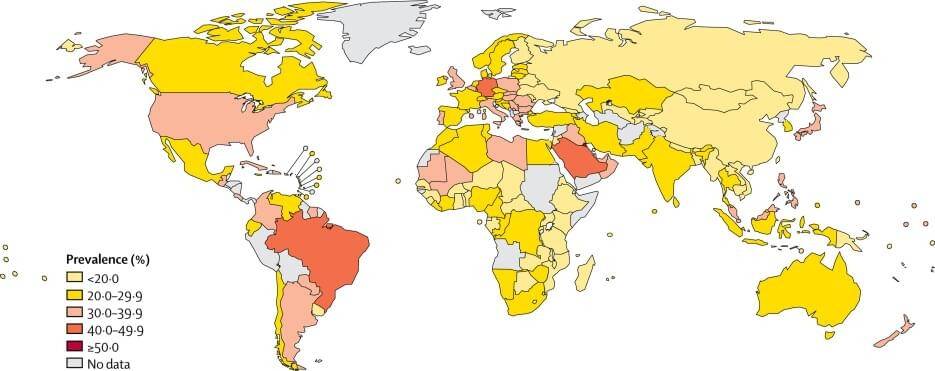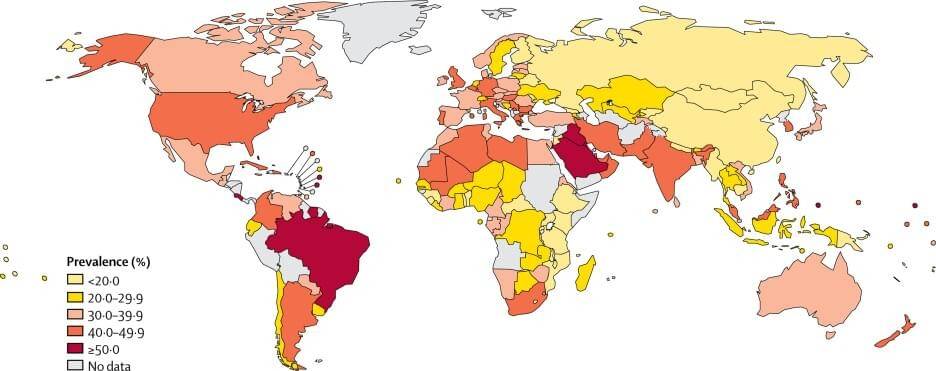The paper, authored by four World Health Organization experts, reports data that update 2008 estimates on levels of activity and, for the first time, reports trend analyses showing that overall, the global level of inactivity in adults remains largely unchanged since 2001.
Women were less active than men, with an over 8% difference at the global level (32% men vs 23%, women). High income countries are more inactive (37%) compared with middle income (26%) and low income countries (16%).
 Subtitle: Country prevalence of insufficient physical activity in men in 2016.[/caption]
[caption id="attachment_24963" align="aligncenter" width="936"]
Subtitle: Country prevalence of insufficient physical activity in men in 2016.[/caption]
[caption id="attachment_24963" align="aligncenter" width="936"] Country prevalence of insufficient physical activity in women in 2016.[/caption]
Download the Lancet article "Worldwide trends in insufficient physical activity from 2001 to 2016: a pooled analysis of 358 population-based surveys with 1·9 million participants"
Country prevalence of insufficient physical activity in women in 2016.[/caption]
Download the Lancet article "Worldwide trends in insufficient physical activity from 2001 to 2016: a pooled analysis of 358 population-based surveys with 1·9 million participants"
1,4 billion adults globally are at risk to develop or exacerbate diseases linked to inactivityThese data show the need for all countries to increase the priority given to national and sub-national actions to provide the environments that support physical activity and increase the opportunities for people of all ages and abilities, to be active every day. The new Global Action Plan on Physical Activity sets the target to reduce physical inactivity by 10% by 2025 and 15% by 2030. Regular physical inactivity increases peoples risk of poor health, including cardiovascular disease, several types of cancer and diabetes, falls, as well as mental health conditions. Publication of levels of participation in children and young people are forthcoming. [caption id="attachment_24962" align="aligncenter" width="935"]
 Subtitle: Country prevalence of insufficient physical activity in men in 2016.[/caption]
[caption id="attachment_24963" align="aligncenter" width="936"]
Subtitle: Country prevalence of insufficient physical activity in men in 2016.[/caption]
[caption id="attachment_24963" align="aligncenter" width="936"] Country prevalence of insufficient physical activity in women in 2016.[/caption]
Download the Lancet article "Worldwide trends in insufficient physical activity from 2001 to 2016: a pooled analysis of 358 population-based surveys with 1·9 million participants"
Country prevalence of insufficient physical activity in women in 2016.[/caption]
Download the Lancet article "Worldwide trends in insufficient physical activity from 2001 to 2016: a pooled analysis of 358 population-based surveys with 1·9 million participants"






